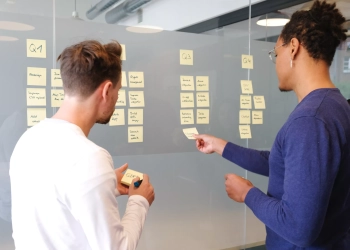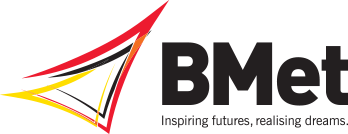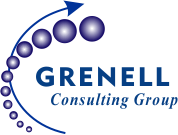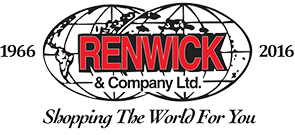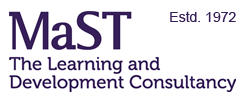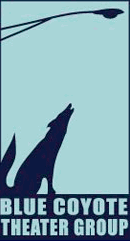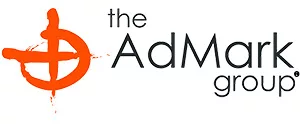When designing or delivering training materials around organizational structure, there are two crucial aspects you must pay attention to.
They both need to be strong if you want your course to take hold and your learners to walk away changed, motivated, and ready to act.
Side 1 – The Structural/Content Side
This is the “what” and the “why.” It’s the backbone of your course.
It answers questions like: How is the organization structured? What models exist? How do decisions flow? Who reports to whom? What’s the impact on collaboration and performance?
For example, the workshop pack from Oak Innovation, titled “Shape Stronger Organizational Structures: A Complete Trainer Training Pack to Redefine Structure and Boost Performance.”
Here are some highlights of what that pack provides:
- A ready-to-deliver full-day agenda for a workshop on organizational structure.
- A 63-slide presentation (editable) and a 48-page participant workbook.
- Icebreakers, training games, facilitator guides, assessments – everything you need to make the “structure” topic tangible.
- It discusses key frameworks, such as Henry Mintzberg’s structural configurations (simple structure, machine bureaucracy, adhocracy, etc.), so learners understand not just “what is” but “why it is.”
- It emphasizes understanding organizational structure as more than charts — as a system of people, processes, and purpose working together to achieve objectives.
On this structural side, the message is: ensure your training material is built on solid, evidence-based content; ensure your learners understand the relevance of structure to performance, agility, communication, and decision-making.
The Oak Innovation pack nails that part.
Side 2 – The Delivery/Experience Side
If the structural/content side is the skeleton, the delivery/experience side is the heart and soul.
It’s how you engage learners, how you make the content come alive, how you ensure they leave saying “aha!”, not just “yawn.”
Because even the best content falls flat if the experience doesn’t bring it to life.
Here’s how the Oak Innovation pack supports you on that side:
- It provides ready-to-use slides (editable), a workbook, and a facilitator guide, meaning you don’t have to build from scratch — you’re free to focus on how you deliver, not just what you provide.
- It includes interactive elements, such as icebreakers, games, and exercises. Because adult learning doesn’t happen when people sit and listen — it happens when they engage, reflect, and apply.
- It sets you up to walk in prepared and confident, rather than scrambling; the website says “the heavy-lifting is done so you can confidently deliver right away.”
- It gives guidance for customization: you can brand it, tweak it, adapt it — which translates into ownership and relevance for your audience.
On this delivery side, the message is: don’t just dump content on people. Build an experience.
Make it interactive.
Use materials that support you so you can show up as the facilitator/guide rather than the frantic “I-hope-this-works” presenter.
Why both sides matter – and how they work together
Think of it this way: if you only focus on the structural/content side, you might create a brilliant slide deck on organizational models and decision flows — but if the participants leave feeling disengaged or confused, nothing changes.
Suppose you focus only on delivery/experience (wow, what a fun workshop!), but the content is shallow. In that case, you’ll entertain the group, but they won’t walk away with insight or actionable takeaways.
When both sides are strong:
- Your learners understand why organizational structure matters (content) and how it shows up in their world (experience).
- Your training becomes memorable, relevant, and actionable.
- You — the facilitator or training designer — walk in confident, supported, and ready to lead rather than stress.
The Oak Innovation workshop pack provides a powerful tool to deliver both sides: strong foundational content + high-impact delivery materials.
Because, as they say themselves, “Typical time to build comparable materials: 20-30 hours + design cost.”
That means you’re getting significant leverage.
How to use this for your next course
Here are some practical steps to apply this two-sided approach using the Oak Innovation pack:
- Purchase and download the pack here:
- Review the content (slides, workbook, facilitator guide) with a structural lens: what organizational structure models will you emphasize? What examples from your organisation make this real for your participants?
- Adapt the delivery/experience: select icebreakers or activities from the pack that match your audience (technical team? leadership team? cross-functional group?).
- Localise branding and context: using the editable slides and workbook, insert your organisation’s examples and your region’s context (if Ireland/Europe), and ensure the language resonates with your learners.
- Facilitate with intention: Bring the structural side to life with meaning (“Here’s why structure matters to our business”), and keep the delivery interactive (use breakouts, real-time mapping of structure within your organization, and reflection).
- Follow up with action: Because the best courses aren’t just about learning — they’re about application. Use the action plan templates in the pack so participants leave with “what I will do next” rather than “that was interesting”.
Final thoughts
If you’re serious about delivering training on organizational structure — or any leadership/business topic, really — you want to invest in both the structural/content side and the delivery/experience side.
The materials we offer you provide a head start and significant momentum.
So here’s your charge: choose the pack, adapt it to your world, own both sides of your course, and create something that doesn’t just inform — but transforms.
Feel free to share this training course material with your team, bookmark it, and plan your next high-impact workshop.
Let’s go — structure that delivers.
Training that matters.



